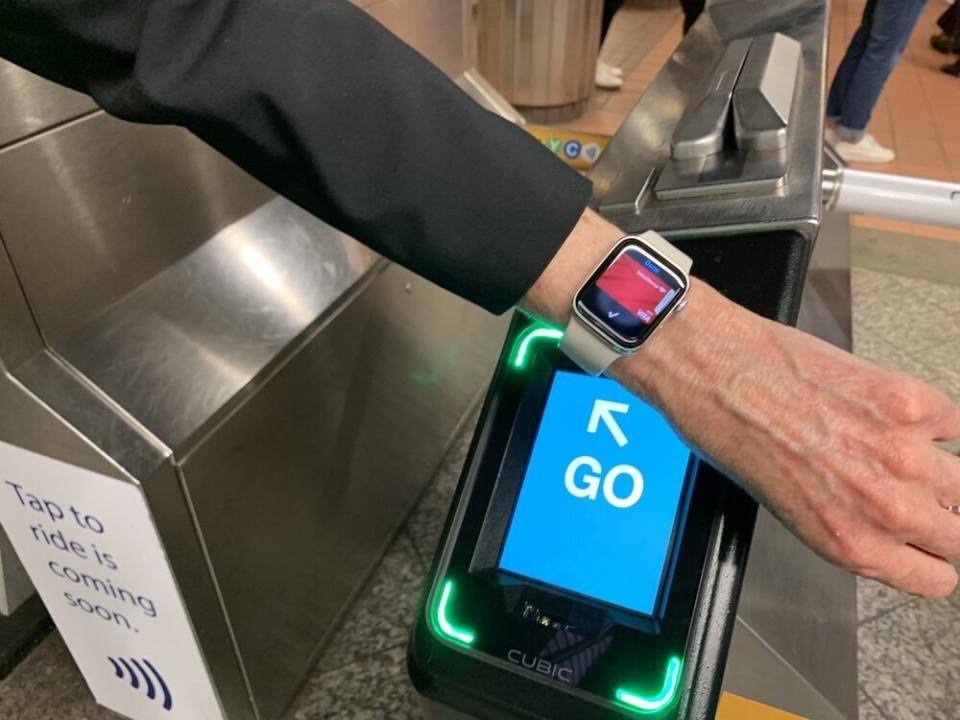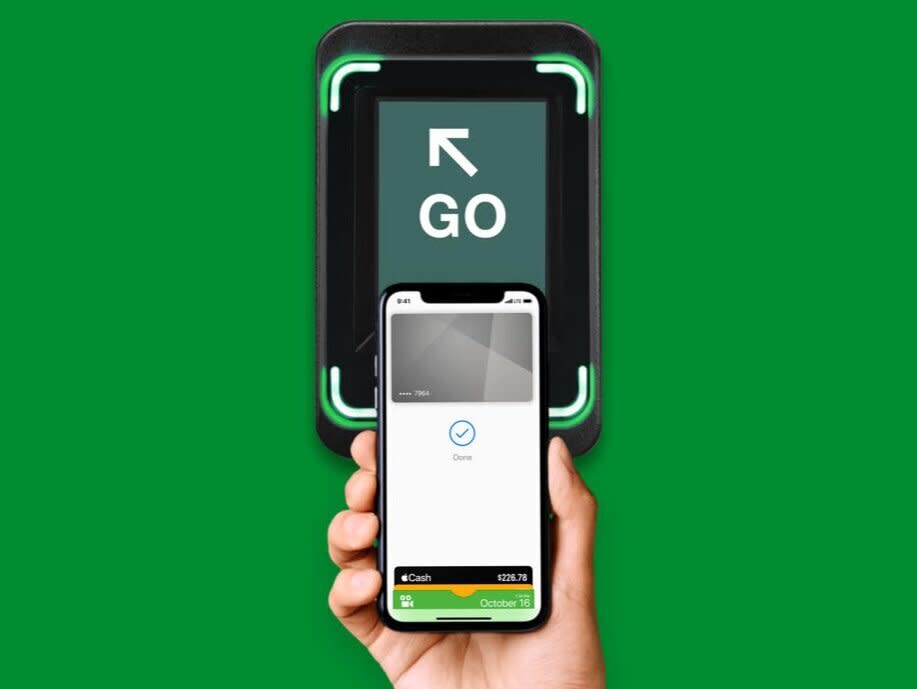The country's largest transit system will soon let you pay with your iPhone
The country's largest, most used transit system is finally being dragged into the 21st century. New York's Metropolitan Transit Authority (MTA), is adding tap-to-pay systems at a handful of subway stations in Manhattan and buses on Staten Island that will let you use your iPhone, Apple Watch, Android smartphones and wearables, and contactless payment cards to pay for your commute.
The tap-to-pay feature launches Friday, May 31, and will make it easier for the system's 2.75 billion annual riders to get on subways and buses in New York City by eliminating the need to swipe the MTA's aging, credit card-like MetroCard. It could also serve as a catalyst to finally push Americans to adopt contactless payments.
Tapping into transit
The Big Apple's new payment system will be available along the MTA's 4, 5, and 6 subway lines between Grand Central Terminal in Manhattan and Atlantic Ave–Barclay's Center in Brooklyn, as well as on all Staten Island buses. The readers are easily recognizable thanks to lit up rectangle screens that show you where to hold your device or contactless payment card.

Devices you'll be able to use include Apple's (AAPL) iPhone and Apple Watch, as well as Samsung devices with Samsung Pay, Fitbit fitness trackers with Fitbit Pay, Android devices with Google Pay, and contactless payment cards.
Called One Metro New York (OMNY), the system uses near-field communication (NFC) readers to confirm your payment information using either your smartphone or tap-to-pay credit or debit card. In 2021, the MTA will roll out a specialized tap-to-pay card that will eventually replace the MetroCard entirely.
I saw the new system in action with an iPhone and Apple Watch, and it certainly looks easy enough to use. Simply place your device up to the payment area, and you're set. It will recognize your payment and let you slip through the turnstile or hop on a bus.
If you're an iPhone or Apple Watch owner and want to try out the OMNY service, you'll have to make sure you're running iOS 12.3 on your iPhone or watchOS 5.2.1 on your Apple Watch.
You'll then need to open up the Wallet app on your phone and select the credit or debit card you want to link to the service. Tap the three dots in the top right corner of the screen, then choose Express Transit Settings and authenticate your identity via your passcode, fingerprint or Face ID.

To use your Apple Watch, open the Watch app on your iPhone, open Wallet and Apple Pay and select Express Transit Card. Follow the on-screen prompts and your set.
You can only use Transit Express if you've got an iPhone SE or iPhone 6 and later models. The service works with all versions of the Apple Watch.
Importantly, you won't have to turn on your phone's screen to pay for your subway or bus trip. Instead, you'll just be able to place it on top of the scanner and keep walking.
Unfortunately, it will still take some time for the MTA to complete its rollout of the program. MTA estimates that it will be about 2020 before the agency is able to fully deploy its contactless readers in every subway station and on every bus. Metro-North Railroad and Long Island Rail Road passengers will have to wait until 2021 for the service.
There's also the fact that the first phase of this rollout will only allow you to use your smartphone to purchase single-ride tickets. Weekly and monthly tickets will be coming sometime down the line. So the average commuter isn't likely to take advantage of contactless service options for a while.
Getting users to tap
U.S. consumers aren't using contactless payment systems like Apple Pay, Google (GOOG, GOOGL) Pay or Samsung Pay at nearly the levels as overseas consumers. But Thomas McCrohan, managing director at Mizuho Securities believes that could change as more transit agencies adopt contactless systems.
In a research note, McCrohan and Mizuho vice president Leonard DeProspo note that Visa (V) found that tap-to-pay cardholders in the U.K. who used London's contactless system were more likely to use their cards than those who didn't use the city's transit offerings.
That also bodes well for card companies like Visa and Mastercard (MA), which McCrohan and DeProspo write could see billions of additional transactions per year thanks to the MTA and make consumers more acclimated to the idea of using tap-to-pay technologies.
Now if we can just get the subway to run on time.
More from Dan:
Amazon shareholders vote to continue selling facial recognition tech to police
Combining T-Mobile and Sprint could hurt wireless competition
Email Daniel Howley at [email protected]; follow him on Twitter at@DanielHowley. Follow Yahoo Finance on Facebook, Twitter, Instagram, andLinkedIn.www.cerveza-artesanal.com/
